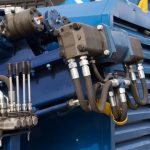5 Technologies Taking over the Supply Chain
Gerd Altmann Pixabay
Technology improvements are necessary to compensate for increasing product demands. Also, society has been more dependent on technology than ever. It raised the demand of customers to more complex technologies. It happens globally today, even the third world countries contribute as customers and manufacturers. Numerous companies resorted to making advanced components for robots for decades.
In response, factories are producing and innovating products. They are also investing in sophisticated equipment sets to get the job done. Robotics is the most famous technology to step up their position in the supply chain.
However, technology is not limited to moving tools to help the factories distribute products efficiently. Sensors and data processing technologies are also heroes of the new industrial revolution.
The supply chain has few mainstream fans, but technology enthusiasts are aware of its significance. Without it, technology wouldn’t be seen globally. Factories and logistics play the biggest roles in the manufacturing industry, and its growth is reliant on modern equipment. These are the big stars that take over the supply chain technologies today.
The Internet of Things (IoT)
It’s convenient for factory management to monitor the condition of all its machines. Today, even the vehicles and other equipment of logistics companies benefit from constant monitoring. The internet of things is the optimum solution for this innovation. Everything that can affect the supply chain of companies can be monitored with the use of IoT.
The main benefit of IoT for the supply chain is the ability to monitor and control the throughput of the factories and logistics. The supply chain has varying demand and capability now and then. Monitoring every parameter helps the management decide, greatly increasing the efficiency of factories. Machines can be connected to IoT to be remotely controlled and maintained.
For logistics, tracking the location of everything is a tedious task for people. However, with IoT, even inventories can be operated faster and smarter. External aspects such as traffic, weather, and even repair status of vehicles can also be monitored through IoT. Enough knowledge about the shipment can make the supply chain efficient. The only drawback of IoT is the risk of a security breach that can result in loss of resources and lives.
Blockchain
Cryptocurrency works through secure electronic transactions that require encrypted keys for approvals. Recording these transactions in real-time through a network can maintain a secure electronic ledger. It was just a concept in fiction stories decades ago, but today, it happens every day. Blockchain is the technology that connects all the recorded information through a real-time network.
Using blockchain is beneficial for tasks that need security. Unlike IoT, blockchain puts encryption to all the connections which limit access to information. It has a huge potential for documentation and traceability purposes. Some large companies are already using it to keep a clean record of their supplies. It has a huge potential for supply chain management because of its secure operation and tracking.
The challenge of using blockchain is its need for a village to run. Cryptocurrency needs the approval of all the users, which consumes time and resources. Usually, blockchain works on a network of companies that has a massive amount of deals made in a short time.
AI, Machine Learning, and Analytics
The terminologies bring a feeling of technology taking over our era. Artificial intelligence together with machine learning and analytics produces a great team of logical prediction technologies. Harnessing their power for supply chain purposes eliminates the need to wait for information to arrive before deciding.
The underrated power of extremely fast investigation of data helps plan purposes. These technologies excel in different fields to do the task. Machine learning excels in finding patterns, AI excels in processing the affected parameters, and analytics will do the prediction. Several improvements are being done to make these technologies more available for supply chains.
Robots and Automation
Robots and machine automation has been already serving the manufacturing industry for a long time. Widely used for assembly and material handling, they are helping the manpower to cater to the sophisticated demands of oblivious consumers. Automating processes using robots always has a huge effect on a supply chain.
All the other technologies focus on data processing, but robots and automation get the jobs done. Working robots only need people for monitoring, maintenance, and operation. After being built, they can handle the manufacturing processes on their own. Some even question if making production floors fully automated should be a goal. Robots and automation is a long term investment, and it will make businesses stay significant in the supply chain.
3D Printing
Every person is unique, and personalized products became a trend nowadays. New generations dream of leaving a mark on the world, and branding themselves online and even their belongings. However, the ability to make things for unique purposes is expensive, until the rise of 3D printing. Because of that, additive technology has been in demand more than ever. If this continues, the supply chain will be taken over by several unique products.
Mass production usually supplies thousands of similar products at the same time, but 3D printing will revolutionize it in the future. 3D printers became famous for their decentralized production. Instruction and production can be made from different parts of the world through the internet. Because 3D printers are already everywhere, it only needs warehouses and inventories for filaments and little scrap. Customer service is also easier for production facilities near the consumers.
Cutting costs for transportation and warehousing still make a huge effect on the supply chain. However, 3D printers consume time and resources to make quality products, and using it for some instances is still unconventional. If the advancement of technology continues, it will make 3D printing faster and smoother.
The Future of Supply Chain Technologies
These advanced technologies still need huge investments for resources and development. They have different effects on the supply chain, but each has its forte in the industry. However, businesses are advancing and technologies are applied to where they belong in the market. Technology is fantastic, but its worth is still measured by its ability to solve problems.















